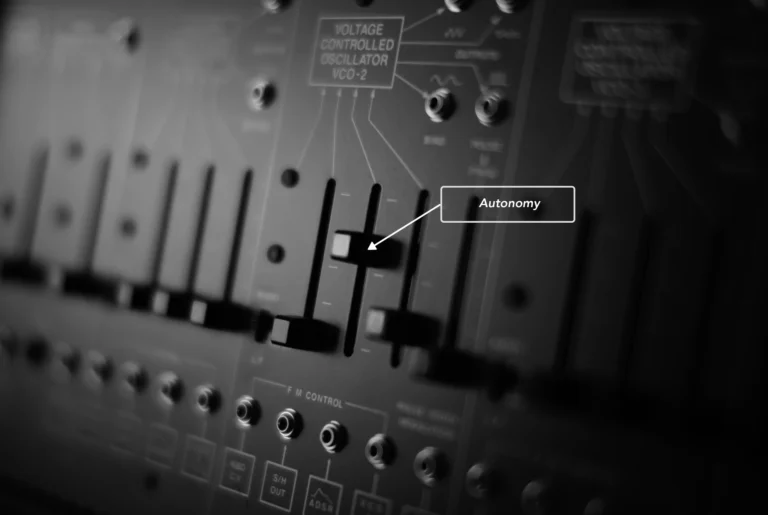This blog was written in collaboration between Oskar Jonuks, Digital Media Manager at Ekobot, and Alex Sixt, Content Marketing Manager at Formant.
Farmers are facing plenty of pressure these days.
As the global population grows, demand that farmers produce food increases as well. The global population is on an upward trajectory, and with it, the demand for food is set to surge by a staggering 60 percent by 2050, according to the Food and Agriculture Organization of the United Nations (FAO). In short, farmers could really use some help as costs rise and resources, especially pertaining to labor, dwindle.
However, these struggles aren’t enough to outright sell farmers on robots– strong hesitation regarding price and concerns over changes to daily operations and reliability still slow adoption. A common dilemma that faces robotic farming companies is successfully pitching their solution to farmers in the face of all this hesitation. Essentially, it boils down to two value points: increased quality of the product or overall decreased costs.
So, what’s the most successful pitch for robotic farming companies to make, of the two? Let’s take a look.
Increased quality
Let’s start with one of the most popular pitches in robotic farming: increasing yield quality.
Farmers operate under relentless pressure to meet the escalating demand for food production, yet labor and climate changes threaten their ability to do so. They can’t afford to lose or damage product by human error or not have enough labor to address needs in a timely manner. Robots offer a viable solution that can work tirelessly even in the harshest environmental conditions such as extreme heat, translating into higher yields with superior quality.
For example, farmers cannot afford to lose produce at its peak moment yet a heatwave makes it too dangerous for laborers to harvest, resulting in a potential loss of product. As a result, less food goes to waste. Robots can harvest crops at the optimal time, ensuring that produce is fresher and more marketable. By introducing automation, a higher yield with better quality translates to more revenue for them and a way to meet the demand. This reduction in food waste contributes to an overall more sustainable approach to meeting the demand.
But maintenance also counts toward quality- and especially when it comes to weeding and pesticides, accuracy is everything to raise a prolific harvest. Let’s say, for example, a farm needs a weeding solution; it’s not enough to simply discuss the point of faster performance of removing weeds.
“We know that weeding is one of the most time-consuming and energy-consuming tasks in agriculture today,” says Jonas Eklind, CEO of Ekobot. “We also know that although herbicides can be used effectively to control weeds, it is estimated that only a small proportion of herbicides reach their target and the rest of them get lost in the surrounding environment. This causes not only economic losses but also chemical hazards and pollution risks.”
Instead, emphasizing that the accuracy of the machine that better targets weeds and causes less harm to the crop speaks to the goal of higher quality and ROI of the robot.
Decreased costs
On the other hand, the cost of food isn’t only rising in grocery stores- food production prices are also on a relentless upward trajectory. Factors like rising labor costs and high turnover rates in the agricultural sector further strain farmers’ budgets. In the fourth quarter of 2022, the agriculture and farming sector saw an average turnover rate of 10.2 percent; a revolving door of hiring that takes a significant toll on farmers’ finances.
Robots make a compelling pitch in robotic farming for reducing operational costs. By automating various tasks, such as planting, harvesting, and maintenance, these robots can significantly cut down on labor expenses. While human workers will remain essential, leaner teams enable farmers to foster stronger relationships with their employees, ultimately improving retention rates and reducing the impact of high turnover.
Lowering maintenance costs of a field, where applicable, should be a large part of the conversation, as well. As reported by McKinsey in 2023, the cost of products such as fertilizer and crop protection chemicals have increased by 80 to 250 percent over the past few years. And in 2022, farmers reported input costs as their number one risk to profitability, with fertilizer and crop protection chemical prices rising the most.
Both of these findings reveal a desperate need for improved accuracy and efficiency in maintaining fields, which robotic farming solutions can assist in by cutting the costs (and physical burden) of asking workers to complete the task. Although some robots can help in more accurately applying chemicals, most companies seeking help with tasks such as weeding are looking to eliminate the use of pesticides entirely by 2030. Automated mechanical weeding, such as that performed by Ekobot’s WEAI for example, further cuts costs by eliminating the need for human labor and chemical products together.
By introducing automation, farmers are given the ability to optimize resource utilization, reducing the overall cost of inputs like water, fertilizers, and pesticides that plague the industry.
Is there a balance?
By now, you’re likely asking, “Aren’t both pitches equally effective?”.
The truth is, they don’t have to live independently: it entirely depends on the prospect you’re pursuing. In addition to their specific needs, each farmer will have their own hesitations surrounding robotic farming that need to be addressed in the pitch.
The key to successfully helping them navigate the transition to automation lies in understanding how to make the most compelling pitch while considering how your solution best addresses their fears. While both paths offer undeniable benefits, the effectiveness of your pitch hinges on your ability to guide prospects toward the right decision.
In Ekobot’s experience, there are benefits to both sides of the conversation- lower costs via reducing chemical use and improving quality by causing less harm to plants.
“At Ekobot, we open up new opportunities to control weeds and reduce herbicide use,” says Eklind. “With Ekobot’s robotic system for weeding, you as a customer can, compared with traditional methods, reduce your costs and reduce your business’s environmental impact from weeding operations.”
Rather than presenting automation as an either-or choice, it’s crucial to take a more strategic approach as stated above. Thoroughly understand your prospect’s unique needs and prepare for any new fears that your pitch could potentially trigger for them. Putting yourself into a prospect’s shoes for each pitch is key to understanding the best way to present your robotic farming solution. For example, the idea of a higher quality yield could lead to questions of how quickly they’ll see ROI if they’re already experiencing the pressure of demand.
You’ve likely built a customer base and are bound to have some satisfied customers willing to speak on their results from your solution. However, don’t select just any happy customer to speak on your behalf- find ones that match the specific set of challenges most of your prospects face. By leveraging the experiences of other users who have stood in similar situations, you get the ability to share insights and facilitate valuable ROI discussions that your team couldn’t replicate themselves.
In short, there is room for discussing both advantages to your robotic solution, however, basing your pitch on what speaks most to their unique challenges will be most successful. In the rapidly evolving landscape of Agtech, the question of whether to prioritize increased quality or decreased costs is at the forefront. While each argument carries its weight, customizing your approach versus consistently utilizing the same point will help you empower prospects. To support farmers and the future of agriculture, addressing each unique obstacle will help them make informed decisions that ensure a more effective and fitting solution for each environment.



